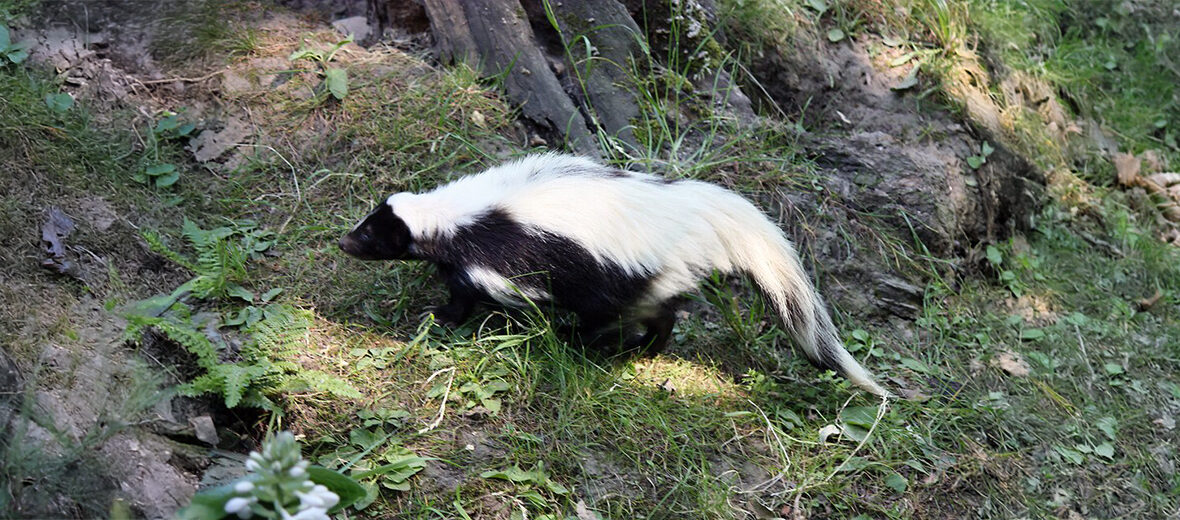
The hooded skunk can be found from southwestern United States down throughout Mexico, Guatemala, Honduras, Nicaragua, and northwest Costa Rica. These skunks are differentiated from striped skunks due in part to their solid white back and tail, as well as the ruff of white fur around their neck, from which they get their common name. These skunks face the threats of hunting and trapping, but they are abundant throughout their range and have a stable population trend. Thus they are listed as Least Concern by the IUCN.
First the Stats…
Scientific name: Mephitis macroura
Weight: Up to 5.95 lbs.
Length: Up to 11.61 inches, plus up to a 15.75 inch tail
Lifespan: Up to 8+ years
Now on to the Facts!
1.) Their scientific name broken down can be translated as Mephītis in Latin which means “foul odor”, μακρός (makrós) in Greek translating to “long”, and οὐρά (ourá) translating to “tail”.
2.) These skunks are typically more than 50% smaller in southern Mexico than they are in the southwestern United States.
3.) The preferred habitats are grasslands, deserts, and the foothills of mountains near rivers. They tend to avoid high elevations.
4.) Earwigs, stink bugs, beetles, small vertebrates, prickly pear cactus fruit, bird eggs, and human garbage is all readily consumed.
5.) In Costa Rica these skunks use their forelimbs to throw bird eggs between their hindlegs at rocks, in order to break them open.
But wait, there’s more on the hooded skunk!
6.) While there have never been any known cases of rabies recorded from these skunks, they are hosts to a range of parasites, including nematodes, roundworms, and fleas.
7.) They are nocturnal (active at night), like other skunks.
Did you know…?
These critters are not known for aggressive behavior at all. If threatened, they will flee. However, if cornered, they will rear up and display their bushy tail as a warning of the odiferous second phase. That being a powerful smelling spray of musk. They can spray their musk upwards of 7+ feet!
8.) There are 7 major components comprising 99% of the volatiles in their spray: (‘’E’’)-2-butene-1-thiol, 3-methyl-1-butanethiol, ‘’S’’-(‘’E’’)-2-butenyl thioacetate, ‘’S’’-3-methylbutenyl thioacetate, s2-phenylethanethiol, 2-methylquinoline, and 2-quinolinemethanethiol.
9.) In some locales their flesh is considered a delicacy.
10.) The female hooded skunk undergoes up to a 60 day gestation (pregnancy) that can yield up to 8 pups.
11.) Great horned owls prey on these skunks.
Now a Short Hooded Skunk Video!
This video talks about skunks in general.
Be sure to share & comment below! Also, check out the Critter Science YouTube channel. Videos added regularly!
Want to suggest a critter for me to write about? Let me know here.
Some source material acquired from: Wikipedia & IUCN
Photo credit: Dmitrij Rodionov




